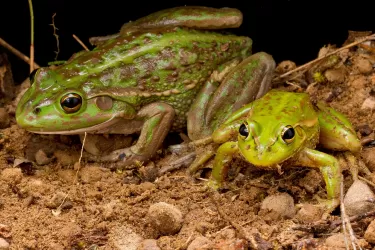Urban Ecology

Environment
Frogs are amazing
Frogs are a vital but endangered part of Australia’s ecosystems. You can help protect them in your neighbourhood

Sciences & Technology
You might find a rare species in your backyard
‘Bioblitz’ events like the City Nature Challenge are advancing science and empowering communities to discover species never seen before in some urban areas

Environment
Go Figure
Do you have a chorus of crickets in your backyard? Here’s why
There’s an explosion of crickets and other insects in Melbourne, here’s why we should embrace these swarms as a cycle of nature

Environment
Design for (all) life
Humans create most designs for themselves, but can and should use opportunities to make spaces that benefit all forms of life

Environment
New design tech offers hope for urban wildlife
Designers and ecologists are working together to reimagine cities as more-than-human places

Sciences & Technology
Mini-beast renaturing: A time for local action
Insect numbers are dwindling around the world and that has an ecological knock-on effect, but we could help by renaturing mini-beasts in our own urban backyards

Sciences & Technology
Illuminating Indigenous culture through plants
Researcher Zena Cumpston’s new booklet on indigenous plants encourages their use and appreciation – providing a portal through which a wide audience may begin to understand the complexity of Indigenous scientific practice

Sciences & Technology
Willie wagtails: The werewolves of the bird world
The willie wagtail, an iconic Australian bird, is known for its fan tail and twinkling song. By recording birds across Victoria, a new study shows that willie wagtails also sing to the moon

Environment
Plants tell stories of cultural connection
Aboriginal peoples’ holistic relationships with all living things is explored throughout The Living Pavilion, an event space and living laboratory that celebrates Indigenous knowledge, ecological science and sustainable design through

Environment
Making cities work for every urban dweller
It’s the urban age for people – and for other species too – so it’s time to start planning for all the plants and animals that call our cities home